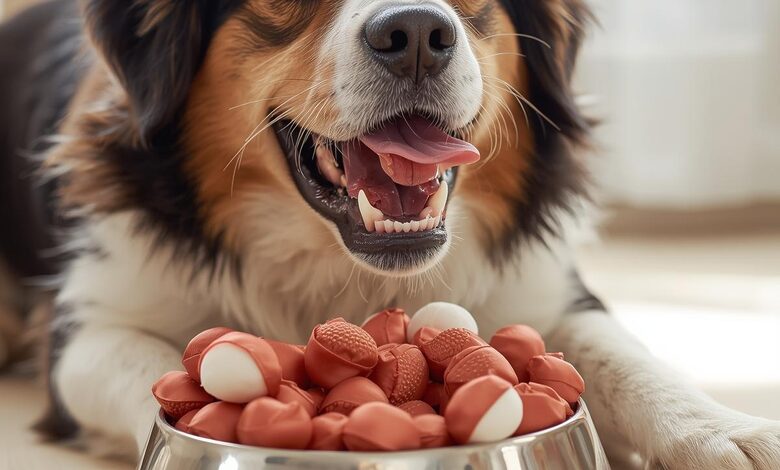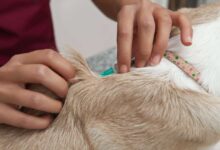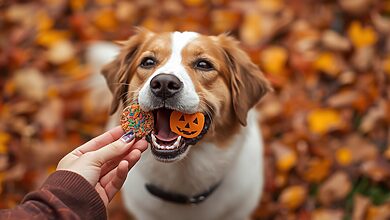Satin Balls for Dogs: Complete Guide to High-Calorie Recipe for Weight Gain and Recovery

Caring for an underweight dog can feel overwhelming.
You want to help your furry friend gain healthy weight quickly.
That’s where satin balls come in.
This nutrient-dense, high-calorie recipe has been used by dog breeders, veterinary professionals, and pet parents for decades to help dogs gain weight safely and effectively.
In this comprehensive guide, you’ll discover everything you need to know about satin balls for dogs—from ingredients and preparation to feeding guidelines and expert-backed safety considerations.
Table of contents
- What Are Satin Balls for Dogs?
- Why Dogs Need Satin Balls: Understanding Canine Weight Loss
- The Original Satin Balls Recipe: Ingredients Breakdown
- Step-by-Step Satin Balls Preparation Guide
- Feeding Guidelines: How to Use Satin Balls as Main Diet or Supplement
- Expert-Backed Safety Considerations and Warnings
- Alternative Ingredients and Recipe Modifications
- Monitoring Your Dog’s Progress and Health
- Choosing the Right Commercial Diet After Satin Balls
- Understanding Canine Nutrition: Beyond Satin Balls
- Cost-Effectiveness and Practical Considerations
- Frequently Asked Questions About Satin Balls for Dogs
- 1. Can I feed satin balls to puppies?
- 2. How long can I safely feed satin balls as the main diet?
- 3. Can I use satin balls for high weight dogs?
- 4. Are satin balls appropriate for dogs with pancreatitis?
- 5. Can I cook the satin balls mixture?
- 6. What should I do if my dog refuses to eat satin balls?
- 7. Can I make satin balls grain-free for allergies?
- 8. How do satin balls compare to prescription weight-gain foods?
- 9. Can I add vegetables to satin balls for extra nutrition?
- 10. What’s the shelf life of frozen satin balls?
- Conclusion: Empowering Your Dog’s Health Journey
What Are Satin Balls for Dogs?
Satin balls are a high-calorie, protein-rich homemade dog food supplement.
Originally developed for breeding dogs and show animals, this recipe helps dogs gain weight rapidly.
The mixture combines ground meat, whole grains, oils, and supplements to create an energy-dense food source.
Many veterinarians and canine nutritionists recommend satin balls for:
- Underweight rescue dogs
- Dogs recovering from illness or surgery
- Nursing mothers who need extra calories
- Senior dogs with appetite loss
- Working dogs with high energy needs
- Dogs with malabsorption issues
According to the American Kennel Club, proper nutrition is essential for maintaining optimal canine health, and supplemental feeding may be necessary for dogs with special nutritional needs.
The beauty of satin balls lies in their versatility.
You can adjust the recipe based on your dog’s specific needs and preferences.
Why Dogs Need Satin Balls: Understanding Canine Weight Loss
Before diving into the recipe, let’s explore why dogs become underweight.
Understanding the root cause helps you address the problem effectively.
Common Causes of Weight Loss in Dogs
Medical Conditions
Several health issues can cause weight loss in dogs:
- Parasites and intestinal worms
- Digestive disorders
- Dental disease affecting eating ability
- Cancer and other chronic illnesses
- Diabetes and thyroid problems
- Kidney or liver disease
The American Veterinary Medical Association emphasizes that unexplained weight loss always warrants veterinary evaluation.
Inadequate Nutrition
Sometimes, dogs don’t get enough calories from their regular diet.
This happens when:
- Food quality is poor
- Portion sizes are insufficient
- Competition from other pets reduces food intake
- High activity levels exceed caloric intake
Stress and Anxiety
Emotional factors significantly impact appetite.
Rescue dogs, recently relocated pets, or anxious animals may refuse food.
Recovery Needs
Dogs recovering from surgery, illness, or injury need extra calories for healing.
Their bodies work overtime to repair tissue and fight infection.
According to veterinary nutrition experts, a recovering dog may need 25-50% more calories than usual.
The Original Satin Balls Recipe: Ingredients Breakdown
Now, let’s explore the classic satin balls recipe.
Each ingredient serves a specific nutritional purpose.
Core Ingredients for Satin Balls
Ground Beef (10 pounds)
Ground beef forms the protein foundation.
Choose beef with 20-30% fat content for optimal calorie density.
The high-quality protein supports:
- Muscle development
- Tissue repair
- Immune system function
- Overall energy production
Beef provides essential amino acids that dogs need for optimal health.
Total Cereal (1 box/10 oz)
Whole grain cereal adds fiber, vitamins, and minerals.
Total cereal is preferred because it’s fortified with:
- B vitamins for energy metabolism
- Iron for blood health
- Zinc for immune function
- Essential vitamins and minerals
The Cornell University College of Veterinary Medicine notes that balanced nutrition includes appropriate carbohydrate sources for sustained energy.
Vegetable Oil (1 cup)
Vegetable oil dramatically increases calorie content.
Each tablespoon provides approximately 120 calories.
Benefits include:
- Dense calorie source for weight gain
- Improved coat condition
- Enhanced palatability
- Better nutrient absorption
Wheat Germ (1 cup)
Wheat germ is nutritionally powerful.
It contains:
- Vitamin E for antioxidant protection
- B vitamins for metabolism
- Healthy fats
- Protein and fiber
Eggs (10 whole eggs with shells)
Raw eggs provide complete protein.
The shells add calcium for bone health.
However, consult your veterinarian about feeding raw eggs, as there are safety considerations.
Unsulfured Molasses (1.25 cups)
Molasses adds sweetness and nutrition.
It provides:
- Iron for blood health
- Manganese for bone development
- Natural energy from simple sugars
- Improved taste appeal
Unflavored Gelatin (10 packets)
Gelatin supports joint health and digestion.
It contains collagen-building amino acids that benefit:
- Joint cartilage
- Skin elasticity
- Coat quality
- Digestive tract lining
Step-by-Step Satin Balls Preparation Guide
Making satin balls is straightforward.
Follow these detailed instructions for best results.
Preparation Requirements
Equipment Needed:
- Large mixing bowl or container
- Mixing spoon or clean hands
- Kitchen scale for accuracy
- Storage containers or freezer bags
- Food processor (optional)
Time Required:
- Preparation: 20-30 minutes
- Mixing: 15-20 minutes
- Total time: 45 minutes to 1 hour
Detailed Preparation Instructions
Step 1: Gather All Ingredients
Measure everything before starting.
Have all components at room temperature for easier mixing.
This prevents cold ingredients from making the mixture too stiff.
Step 2: Mix Dry Ingredients
In your large bowl, combine:
- Total cereal (crush it slightly)
- Wheat germ
- Unflavored gelatin packets
Mixing dry ingredients first ensures even distribution throughout the recipe.
Step 3: Add Liquid Components
Pour in:
- Vegetable oil
- Unsulfured molasses
Mix thoroughly until well combined.
The mixture will look like a thick paste.
Step 4: Incorporate Ground Beef
Break up the ground beef into chunks.
Add it gradually to the mixture.
Use clean hands to blend everything together thoroughly.
This step requires good mixing to ensure all ingredients distribute evenly.
Step 5: Add Eggs
Crack eggs directly into the mixture.
For calcium supplementation, you can:
- Blend eggshells in a food processor first
- Crush them finely by hand
- Mix them into the recipe
The American Animal Hospital Association recommends discussing any calcium supplementation with your veterinarian to avoid imbalances.
Step 6: Knead the Mixture
Continue mixing until you achieve uniform consistency.
The final product should be:
- Firm but moldable
- Well-blended throughout
- Free of dry pockets
- Slightly sticky to touch
Step 7: Form Into Portions
Shape the mixture into balls or patties.
Portion sizes depend on your dog’s weight:
- Small dogs (under 20 lbs): 1-2 oz portions
- Medium dogs (20-50 lbs): 3-4 oz portions
- Large dogs (50-100 lbs): 5-6 oz portions
- Giant breeds (over 100 lbs): 7-8 oz portions
Step 8: Storage
Place portions in freezer bags or containers.
Proper storage is crucial for food safety.
Refrigerate what you’ll use within 3-4 days.
Freeze the rest for up to 3 months.
Feeding Guidelines: How to Use Satin Balls as Main Diet or Supplement
Now that you’ve prepared satin balls, let’s discuss feeding strategies.
Proper introduction prevents digestive upset.
Introducing Satin Balls to Your Dog’s Diet
Start Slowly
Never switch foods abruptly.
Begin with small amounts mixed into regular food.
Gradually increase the proportion over 5-7 days.
This transition period allows your dog’s digestive system to adapt.
Initial Feeding Schedule
Days 1-2:
- Mix 10-20% satin balls with 80-90% regular food
- Monitor for any digestive reactions
Days 3-4:
- Increase to 30-40% satin balls
- Continue observing stool consistency and appetite
Days 5-7:
- Progress to 50-60% satin balls
- Assess your dog’s response and adjust accordingly
Using Satin Balls as a Supplement
Many pet parents use satin balls as a calorie booster rather than complete replacement.
Supplemental Feeding Approach:
- Continue regular dog food as primary nutrition
- Add satin balls as a high-calorie treat
- Feed 1-2 portions daily between meals
- Monitor weight gain weekly
This approach works well for:
- Dogs needing modest weight gain
- Picky eaters requiring appetite stimulation
- Senior dogs with reduced food intake
- Active dogs needing extra energy
Using Satin Balls as Main Diet
Some situations require satin balls as the primary food source.
This is typically temporary during intensive weight gain periods.
Main Diet Feeding Guidelines:
Calculate Daily Caloric Needs
Work with your veterinarian to determine requirements.
Generally, dogs need:
- 30 calories per pound for maintenance
- 40-50 calories per pound for weight gain
- Even more for nursing mothers or working dogs
Divide Into Multiple Meals
Feed smaller portions throughout the day:
- 3-4 meals for adult dogs
- 4-5 meals for puppies or very underweight dogs
- Consistent timing helps digestion
Monitor Progress Closely
Weigh your dog weekly.
Healthy weight gain is:
- 1-2% of body weight per week for adult dogs
- Slightly higher for growing puppies
- Gradual and steady, not rapid
The Veterinary Nutrition Society recommends professional monitoring during any intensive feeding program.
Duration of Main Diet Use
Satin balls shouldn’t be a permanent solution.
Typical timelines:
- 2-4 weeks for minor weight gain
- 4-8 weeks for moderate weight restoration
- 8-12 weeks for severe cases under veterinary supervision
Signs Your Dog Is Responding Well
Watch for positive indicators:
- Increased energy levels
- Improved coat condition
- Healthy weight gain
- Good stool consistency
- Enhanced appetite
- Better muscle tone
Expert-Backed Safety Considerations and Warnings
While satin balls are beneficial, certain precautions are essential.
Let’s examine important safety guidelines.
Veterinary Consultation Is Mandatory
Never start satin balls without professional guidance.
Your veterinarian should:
- Identify underlying causes of weight loss
- Rule out serious medical conditions
- Calculate appropriate calorie intake
- Monitor progress and adjust as needed
- Check for nutritional balance
According to the American College of Veterinary Nutrition, homemade diets require professional oversight to ensure complete and balanced nutrition.
Raw Egg Concerns
The original recipe includes raw eggs.
However, this poses potential risks:
Salmonella Contamination
Raw eggs may carry salmonella bacteria.
This can cause:
- Digestive upset in dogs
- Potential transmission to humans
- Food poisoning symptoms
Biotin Deficiency
Raw egg whites contain avidin.
This protein binds biotin (vitamin B7), potentially causing deficiency with long-term feeding.
Safer Alternatives:
- Use pasteurized eggs
- Cook eggs before adding
- Consult your veterinarian about egg inclusion
Bacterial Growth and Food Safety
Ground beef provides excellent bacterial growth conditions.
Follow strict food safety protocols:
Handling Guidelines:
- Wash hands thoroughly before and after preparation
- Use clean equipment and surfaces
- Refrigerate immediately after making
- Thaw frozen portions in the refrigerator only
- Never leave at room temperature beyond 2 hours
Storage Times:
- Refrigerator: 3-4 days maximum
- Freezer: Up to 3 months
- Thawed portions: Use within 24 hours
Nutritional Balance Concerns
Satin balls are calorie-dense but may lack complete nutrition.
Potential Deficiencies:
- Calcium-phosphorus imbalance
- Insufficient vitamins and minerals
- Limited variety of protein sources
- Possible nutrient excesses
Solutions:
- Use as short-term solution only
- Add veterinary-approved multivitamin
- Transition to complete and balanced diet
- Regular blood work monitoring
Dogs Who Shouldn’t Have Satin Balls
Certain conditions contraindicate satin balls:
Medical Restrictions:
- Pancreatitis or history of pancreatic issues (high fat content)
- Severe kidney disease (high protein)
- Diabetes (molasses and carbohydrates)
- Food allergies to ingredients
- Digestive disorders requiring specific diets
Special Populations:
- Very young puppies (under 8 weeks)
- Dogs with compromised immune systems (raw egg risk)
- Pets on prescription diets
- Dogs with obesity (clearly not appropriate)
Always discuss your dog’s complete medical history with your veterinarian.
Alternative Ingredients and Recipe Modifications
The traditional recipe can be modified for specific needs.
Let’s explore safe variations.
Ingredient Substitutions
Ground Meat Options:
- Ground turkey (leaner option)
- Ground chicken (for beef allergies)
- Ground lamb (novel protein source)
- Venison or bison (specialty proteins)
Choose meat with adequate fat content (20-30%) for calorie density.
Cereal Alternatives:
- Oatmeal (gluten-free option)
- Rice cereal (for sensitive stomachs)
- Grain-free option: increase meat portion
Oil Variations:
- Coconut oil (medium-chain triglycerides)
- Olive oil (heart-healthy fats)
- Fish oil (omega-3 fatty acids)
- Flaxseed oil (plant-based omega-3s)
Molasses Substitutes:
- Honey (use less due to sweetness)
- Maple syrup (natural sweetener)
- Eliminate entirely if managing diabetes
Enhanced Nutrition Add-Ins
Boost nutritional value with veterinarian-approved additions:
Supplements:
- Canine multivitamin powder
- Probiotics for digestive health
- Calcium supplement (if not using eggshells)
- Fish oil for omega-3 fatty acids
Whole Food Additions:
- Pureed pumpkin (fiber and vitamins)
- Cooked sweet potato (complex carbohydrates)
- Pureed carrots (beta-carotene)
- Blueberries (antioxidants)
Add these in small amounts (5-10% of total recipe) to maintain calorie density.
Lower-Fat Modifications
For dogs sensitive to fat:
Adjustments:
- Reduce oil to 1/2 cup or eliminate
- Use 90% lean ground meat
- Add cooked rice for bulk
- Increase vegetables slightly
Note that reducing fat significantly decreases calorie content.
This modification works better as a supplement than main diet for weight gain.
Monitoring Your Dog’s Progress and Health
Successful weight gain requires careful tracking.
Here’s how to monitor effectively.
Weekly Weigh-Ins
Consistent weighing reveals true progress.
Best Practices:
- Use the same scale each time
- Weigh at the same time of day
- Record measurements in a journal
- Take weekly progress photos
Expected Results:
- Week 1-2: Minimal visible change
- Week 3-4: Noticeable weight increase
- Week 5-8: Significant improvement
- Beyond 8 weeks: Goal weight achieved or veterinary reassessment needed
Body Condition Scoring
Weight alone doesn’t tell the whole story.
Assess body condition regularly:
Ideal Body Condition:
- Ribs palpable but not visible
- Visible waist when viewed from above
- Abdominal tuck when viewed from side
- No excessive fat deposits
Underweight Signs:
- Ribs, spine, and hip bones prominently visible
- No body fat palpable
- Severe abdominal tuck
- Muscle wasting
High Weight Indicators:
- Ribs difficult to feel
- No visible waist
- Abdominal sagging
- Fat deposits over back and tail base
The Association for Pet Obesity Prevention provides body condition scoring charts for accurate assessment.
Health Markers to Watch
Beyond weight, monitor overall health:
Positive Signs:
- Increased activity and playfulness
- Shinier, healthier coat
- Better muscle tone
- Improved stamina
- Healthy appetite
- Normal stool consistency
Warning Signs:
- Vomiting or diarrhea
- Lethargy or weakness
- Excessive thirst or urination
- Skin problems or coat deterioration
- Behavioral changes
Contact your veterinarian immediately if concerning symptoms appear.
When to Transition Away from Satin Balls
Satin balls are a temporary solution.
Transition Indicators:
- Dog reaches healthy target weight
- Body condition score improves to ideal
- Underlying health issues resolved
- Veterinarian recommends diet change
Transition Process:
Gradually replace satin balls with regular dog food over 7-10 days:
- Days 1-3: 75% satin balls, 25% regular food
- Days 4-6: 50% satin balls, 50% regular food
- Days 7-9: 25% satin balls, 75% regular food
- Day 10+: 100% regular food
This prevents digestive upset from sudden diet changes.
Choosing the Right Commercial Diet After Satin Balls
Once your dog reaches healthy weight, proper nutrition maintenance is crucial.
Let’s discuss long-term feeding strategies.
High-Quality Commercial Dog Food Selection
Look for these characteristics:
Protein Source:
- Named meat as first ingredient
- Multiple animal protein sources
- Minimum 25-30% protein for adults
- Higher for working dogs or athletes
Nutritional Completeness:
- AAFCO statement for life stage
- Balanced vitamins and minerals
- Appropriate fat content (12-18%)
- Quality carbohydrate sources
Ingredient Quality:
- Whole food ingredients
- Limited fillers and by-products
- No artificial colors or flavors
- Appropriate preservatives
The World Small Animal Veterinary Association publishes guidelines for selecting nutritious commercial pet foods.
Maintaining Healthy Weight Long-Term
After successful weight gain:
Prevention Strategies:
- Feed measured portions consistently
- Maintain regular meal schedule
- Provide appropriate exercise
- Monitor weight monthly
- Annual veterinary checkups
Calorie Adjustments:
- Reduce to maintenance calories
- Calculate based on ideal weight, not previous underweight
- Adjust for activity level changes
- Modify for aging or health changes
Understanding Canine Nutrition: Beyond Satin Balls
Let’s explore fundamental canine nutrition principles.
This knowledge helps you make informed feeding decisions.
Essential Nutrients for Dogs
Dogs require balanced nutrition from six nutrient categories:
Proteins:
- Building blocks for muscles, organs, and tissues
- Essential amino acids from animal sources
- Support immune function and healing
- Required for enzyme and hormone production
Fats:
- Most concentrated energy source
- Essential fatty acids for health
- Vitamin absorption (A, D, E, K)
- Skin and coat condition
- Brain development and function
Carbohydrates:
- Energy for daily activities
- Fiber for digestive health
- Some nutrients and phytochemicals
- Not essential but beneficial in proper amounts
Vitamins:
- Regulate countless body functions
- Support immune system
- Enable energy metabolism
- Maintain organ health
Minerals:
- Bone and tooth structure
- Nerve transmission
- Muscle contraction
- Fluid balance
Water:
- Most essential nutrient
- Regulates body temperature
- Transports nutrients
- Eliminates waste
Life Stage Nutritional Needs
Requirements change throughout life:
Puppies:
- Higher calories for growth
- Increased protein needs
- More frequent meals
- Critical calcium-phosphorus balance
Adult Dogs:
- Maintenance calorie levels
- Balanced nutrition for health
- Activity-based adjustments
- Breed-specific considerations
Senior Dogs:
- Often fewer calories needed
- Enhanced joint support
- Easily digestible protein
- Antioxidants for aging
Special Dogs:
- Pregnancy and nursing: 25-50% more calories
- Working dogs: significantly increased energy
- Medical conditions: prescription diets
Cost-Effectiveness and Practical Considerations
Understanding the economics helps with planning.
Satin Balls Cost Analysis
Let’s examine approximate costs (2024 U.S. prices):
Ingredient Costs:
- Ground beef (10 lbs): $35-$50
- Total cereal (10 oz): $5-$7
- Vegetable oil (1 cup): $2-$3
- Wheat germ (1 cup): $4-$6
- Eggs (10): $4-$6
- Molasses (1.25 cups): $3-$5
- Gelatin (10 packets): $8-$12
Total Recipe Cost: $61-$89
Yield: Approximately 12-13 pounds of prepared food
Cost Per Pound: $4.70-$6.85
Comparing to Commercial Alternatives
High-Calorie Commercial Options:
- Prescription weight-gain diets: $3-$5 per pound
- High-performance dog food: $2-$4 per pound
- Standard premium dog food: $1.50-$3 per pound
Satin balls are mid-range in cost but offer customization benefits.
Time Investment Considerations
Preparation Time:
- Initial recipe: 45-60 minutes
- Portioning and freezing: 20-30 minutes
- Total time investment: 75-90 minutes
Frequency:
One batch typically lasts:
- Small dogs: 3-4 weeks
- Medium dogs: 2-3 weeks
- Large dogs: 1-2 weeks
- Giant breeds: Less than 1 week
Consider whether time investment fits your schedule.
Frequently Asked Questions About Satin Balls for Dogs
Here are detailed answers to common questions about this weight-gain recipe.
1. Can I feed satin balls to puppies?
Yes, but with important modifications and veterinary oversight.
Puppies have specific nutritional requirements for proper growth.
The calcium-phosphorus ratio is particularly critical for skeletal development.
Puppy Considerations:
- Consult your veterinarian before feeding
- Ensure proper calcium balance (may need supplementation)
- Feed smaller, more frequent portions
- Monitor growth rate carefully (too rapid can cause problems)
- Consider puppy-specific commercial foods as safer option
Generally, a complete and balanced puppy food is preferable unless specific circumstances warrant satin balls under veterinary guidance.
2. How long can I safely feed satin balls as the main diet?
Satin balls should be a temporary dietary solution, typically 4-12 weeks maximum.
Timeline Guidelines:
- Short-term use: 2-4 weeks for minor weight gain
- Medium-term: 4-8 weeks for moderate restoration
- Extended use: 8-12 weeks only under veterinary supervision
- Long-term: Not recommended without professional diet formulation
Extended feeding without proper nutritional balancing may cause deficiencies or excesses.
Your veterinarian should monitor blood work and overall health during prolonged use.
3. Can I use satin balls for high weight dogs?
Absolutely not.
Satin balls are specifically designed for weight gain with high calorie density.
For high weight Dogs:
- Reduce overall calorie intake instead
- Choose weight management dog foods
- Increase exercise appropriately
- Work with veterinarian on weight loss plan
- Consider prescription weight loss diets if needed
Feeding satin balls to high weight dogs would worsen their condition and associated health risks.
4. Are satin balls appropriate for dogs with pancreatitis?
No, satin balls are contraindicated for dogs with pancreatitis history.
The high fat content can trigger dangerous pancreatic inflammation.
Pancreatitis Dietary Requirements:
- Low-fat diets (typically under 10% fat)
- Easily digestible ingredients
- Moderate protein levels
- Prescription diets often recommended
Dogs with pancreatitis requiring weight gain need specially formulated diets under veterinary care.
5. Can I cook the satin balls mixture?
Yes, cooking is actually a safer option that reduces bacterial contamination risk.
Cooking Instructions:
- Form into meatball or patty shapes
- Bake at 350°F for 20-25 minutes
- Ensure internal temperature reaches 160°F
- Cool completely before serving
- Store refrigerated or frozen
Cooking eliminates salmonella concerns from raw eggs and ground beef.
The tradeoff is that heat destroys some nutrients, particularly from raw egg yolks.
6. What should I do if my dog refuses to eat satin balls?
Some dogs initially reject new foods, especially if they’re picky eaters.
Strategies to Improve Palatability:
- Warm slightly before serving (enhances aroma)
- Mix with favorite treats or food
- Add low-sodium broth for moisture
- Hand-feed small amounts initially
- Try different portion sizes or shapes
If Refusal Continues:
- Consult your veterinarian about appetite stimulants
- Investigate underlying causes of food aversion
- Consider alternative weight-gain strategies
- Rule out dental pain or mouth problems
Never force-feed, as this creates negative food associations.
7. Can I make satin balls grain-free for allergies?
Yes, grain-free modifications are possible.
Grain-Free Adjustments:
- Eliminate Total cereal and wheat germ
- Increase ground meat proportion
- Add cooked sweet potato or pumpkin
- Include ground flaxseed for fiber
- Maintain oil content for calories
Ensure any grain-free version still provides adequate nutrition.
Consult a veterinary nutritionist for long-term grain-free feeding to ensure balanced nutrition.
8. How do satin balls compare to prescription weight-gain foods?
Both have advantages for different situations.
Satin Balls Advantages:
- Lower cost per serving
- Customizable ingredients
- No prescription required
- Highly palatable for most dogs
Prescription Diet Advantages:
- Complete and balanced nutrition
- Formulated by veterinary nutritionists
- Consistent nutritional profile
- No food safety preparation concerns
- Appropriate for long-term feeding
Best Choice Depends On:
- Duration of feeding needed
- Your dog’s specific health conditions
- Budget considerations
- Your ability to prepare homemade food safely
Discuss options with your veterinarian for your specific situation.
9. Can I add vegetables to satin balls for extra nutrition?
Yes, small amounts of dog-safe vegetables can enhance nutrition.
Recommended Vegetables:
- Pureed pumpkin (fiber and vitamins)
- Cooked and mashed sweet potato
- Steamed and pureed carrots
- Cooked green beans (fiber)
- Pureed zucchini or squash
Important Guidelines:
- Keep vegetables to 5-10% of total recipe
- Always puree or mash thoroughly
- Avoid toxic vegetables (onions, garlic)
- Don’t reduce calorie-dense ingredients
Too many vegetables can dilute the calorie density that makes satin balls effective for weight gain.
10. What’s the shelf life of frozen satin balls?
Properly stored satin balls maintain quality for up to 3 months frozen.
Optimal Storage Practices:
- Use freezer-safe containers or bags
- Remove excess air to prevent freezer burn
- Label with preparation date
- Maintain freezer temperature at 0°F or below
- Store in single-serving portions
Thawing Guidelines:
- Thaw in refrigerator overnight
- Never thaw at room temperature
- Use thawed portions within 24 hours
- Never refreeze previously thawed food
Proper storage ensures food safety and maintains nutritional quality.
Conclusion: Empowering Your Dog’s Health Journey
Helping your underweight dog gain healthy weight is an act of love.
Satin balls provide a powerful tool for this journey when used appropriately.
Remember these key principles:
Always Start with Veterinary Consultation
Professional guidance ensures you address underlying health issues properly.
Your veterinarian provides personalized recommendations based on your dog’s specific needs.
Use Satin Balls as Temporary Solution
This recipe excels as short-term nutritional support during recovery or weight restoration.
Transition to complete, balanced commercial diets for long-term maintenance.
Monitor Progress Closely
Regular weigh-ins, body condition assessment, and health monitoring ensure successful outcomes.
Adjust feeding strategies based on your dog’s response.
Prioritize Food Safety
Proper handling, storage, and preparation protect both your dog and your family from foodborne illness.
Consider cooking the mixture for enhanced safety.
Combine with Comprehensive Care
Nutrition is just one aspect of health.
Provide appropriate exercise, mental stimulation, regular veterinary care, and lots of love.
Your dedication to your dog’s wellbeing shines through your commitment to proper nutrition.
With patience, consistency, and professional guidance, you’ll help your furry friend achieve optimal health and vitality.
The journey to healthy weight gain takes time, but the reward—a thriving, energetic companion—is absolutely worth it.
Your dog depends on you for proper care, and you’re taking wonderful steps by educating yourself about nutritional options.
Here’s to your dog’s health, happiness, and many wonderful years together!





